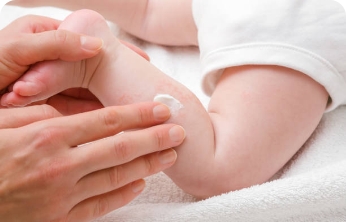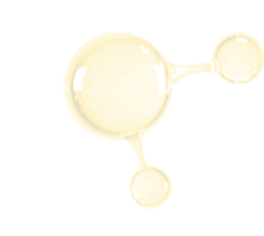Weeks 17-18 of Baby's 1st Year:
At over 1 year and 4 months old, the baby can control daytime bowel and bladder movements. If they wet their pants due to being too late, they will actively express it. Their reaction speed is getting faster, able to quickly snatch toys from your hands. Currently, the baby's favorite word is "no," with self-awareness further strengthening in their little minds, and a strong desire to make their own decisions. They also have obvious food preferences, such as: "I only want to eat this today, not that," or "want to eat more today, less tomorrow." These are inevitable laws of the baby's psychological and behavioral development—parents must understand and tolerate them, guiding them to try more foods and gradually move away from picky eating.
Tips to Improve Baby Picky Eating
1) Create a Pleasant Dining Environment
Let the baby eat with the whole family or with non-picky peers to create a happy dining atmosphere, and encourage the baby to learn from adults or other children.
2) Parents Set a Good Example
Family members should not discuss in front of the baby about certain foods being unpalatable or having special tastes. For foods the baby dislikes, parents should set an example by eating them with gusto and praising how delicious they are.
3) Make Food "Appealing"
Try to excel in cooking to prevent the baby from picking out disliked foods. For example, if the baby dislikes egg yolks, mix raw eggs with flour to make egg pancakes or egg noodles. If they dislike carrots or other vegetables, wrap them with meat into dumplings or buns, or add some ketchup to make cold dishes, promoting intake through调味 and supplementing necessary nutrients.
4) Strictly Control Snacking
Strictly control the amount of snacks to ensure a 3.5-4 hour fasting period between meals, allowing the gastrointestinal tract to empty and creating a sense of hunger. When hungry, the baby will find previously disliked foods palatable, gradually adapting over time.
5) "Cleverly" Supplement Nutritional Gaps
To avoid nutritional deficiencies from picky eating, choose formula milk with OPO structural fat and probiotics. This not only ensures daily nutrient needs but also promotes gastrointestinal digestion, calcium absorption, increases appetite, and helps improve picky eating for balanced nutrition.
Weeks 19-20 of Baby's 1st Year:
As the baby grows day by day, at 1 year and 4 months, they can not only understand simple words and sentences but also respond to what adults say. For example, when hearing "Give the banana to Daddy," they will bring the banana to Daddy's mouth. However, the baby can only express meaning with simple words—if the baby says "饭" (rice), it may mean "I want to eat." Although the baby can understand and use few words, they are in a language development leap period. Parents must not miss this great opportunity to encourage speaking: talk more with the baby, use fluent language with exaggerated expressions, and guide them to say simple but coherent words like "Mommy, Daddy eat, hug."
How to Teach a 1-Year-Old to Speak?
1) Value Daily Communication
When changing the baby's diaper, say: "Baby's bottom is dirty, Mommy will change the diaper, stick the little tape—diaper changed, baby is happy!" When feeding water, say: "Drink water." When looking in the mirror, point and say "This is baby," "This is Mommy." Additionally, when going out, use everything seen and heard as conversation topics.
2) Appropriate Language Stimulation
When talking to the baby, use a gentle voice and slow pace, possibly with beautiful melodies. For example, sing lullabies softly or read poems like the "Three Character Classic." However, maintain balance—avoid excessive or prolonged stimulation to prevent brain fatigue and counterproductive effects.
Weeks 21-22 of Baby's 1st Year:
The baby is nearly 1.5 years old, seemingly clinging to Mommy all the time, even needing her company to sleep at night. This clinginess is actually the first attachment to the closest person, a crucial milestone in psychological development and relationship cognition. Along with attachment comes separation anxiety—two sides of the same coin. Mothers should offer full understanding, tolerance, patience, and expressions of love to help the baby continuously confirm "Mommy is here," establishing a sense of security that influences their life, ultimately leading to true independence. Thus, independence, security, and intimate relationships all develop progressively alongside initial attachment.
How to Help Babies Overcome Clinginess
1) Create a Sense of Security
When the baby can't see Mommy, they truly think "Mommy is gone." Facing unfamiliar environments or resisting strangers are signs of cognitive development. Mothers must fully acknowledge the baby's feelings, offer comfort, and help them repeatedly confirm "Mommy is here" to gradually develop trust and security in the environment, which will improve over time.
2) Cultivate Independence
Of course, excessive attachment can inhibit normal independence development. In safe, familiar environments, gradually let the baby adapt to short periods of alone time—such as completing games independently, reading books, or assigning simple tasks like "find the lost teddy bear" or "put toys in the basket"—to enhance independence.
3) Expand External Exposure
Lack of outside contact intensifies attachment to Mommy. Regular outings, trips, and playtime with peers expand the baby's horizons, shift interests, reduce maternal attachment, and reveal a new world.
Weeks 23-24 of Baby's 1st Year:
The baby is almost 1.5 years old, starting to use tools to solve problems—such as moving a stool to reach objects on the table. This indicates significant progress not only in motor and coordination skills but also in problem-solving abilities. Meanwhile, language development enters a new stage, mastering 50-100 words, with vocabulary continuing to grow explosively from this month, reaching a "language burst" within the next six months. Parents should not forget oral and dental care: the baby has about 10 erupted teeth, requiring regular cleaning and care. Choose sugar-free formula to prevent tooth decay.
How to Establish Good Oral Care Habits
1) Cultivate Correct Brushing Concepts
Some parents ignore baby milk teeth, thinking it's too early to brush until permanent teeth emerge—a mistaken idea. Brush and clean the baby's mouth from the first milk tooth eruption to prevent excessive oral microorganisms, toothaches, or cavities.
2) Attract Baby's Attention with Toothcare Tools
1.5-year-olds have their own preferences—let them choose favorite toothbrushes, cups, and toothpaste flavors to attract attention and accept brushing through tools.
3) Cultivate Brushing Interest
· Through games: With rapid gross and fine motor development, the baby wants to touch everything. Use the toothbrush as a game prop to naturally and happily accept brushing.
· Through stories and rhymes: Make up stories about animals brushing teeth or find rhymes to help the baby understand brushing benefits and harms of not brushing, internalizing the habit through exposure.
4) Family Demonstrates Brushing
Family guidance and demonstration trigger imitation, especially in households with older siblings. When the baby starts brushing, positive encouragement is key. If they can't brush thoroughly, parents can help without criticism.
5) Create Brushing Rituals
Once started, maintain consistency. Brush twice daily at fixed times, such as before bed, establishing a ritual that gradually becomes an internalized habit.
6) Choose Sugar-Free Formula
The baby still needs milk, especially bedtime milk. Formula containing sucrose increases tooth decay risk—choose sugar-free formula to protect dental health.

 En
En Member Login
Member Login Contact
Contact







